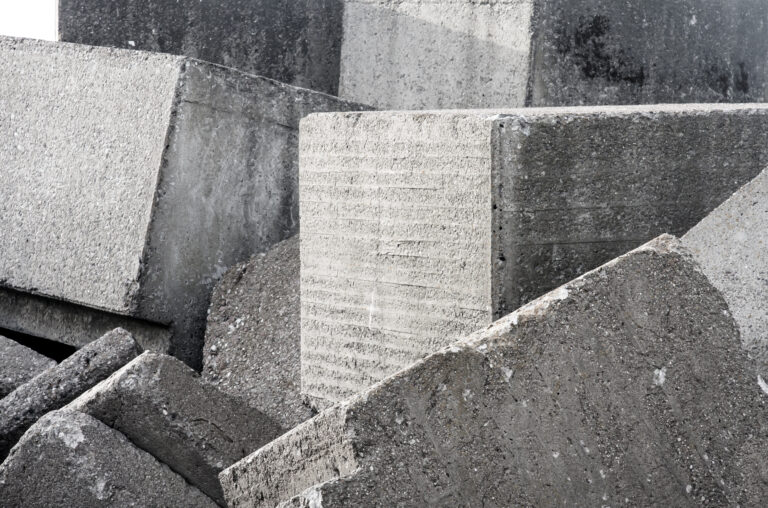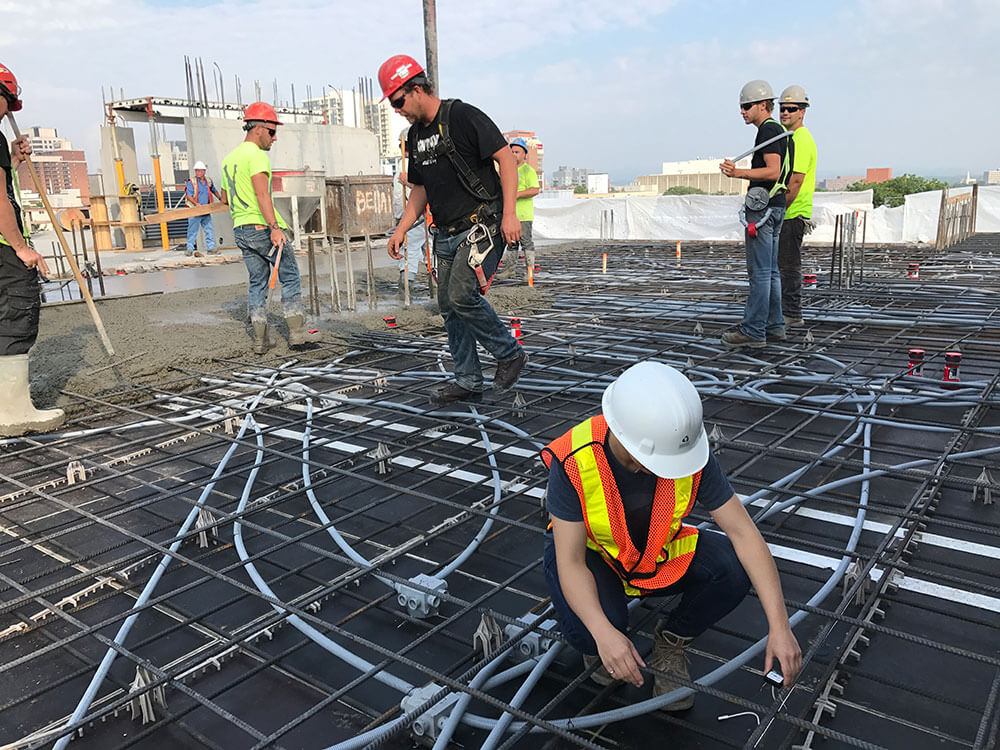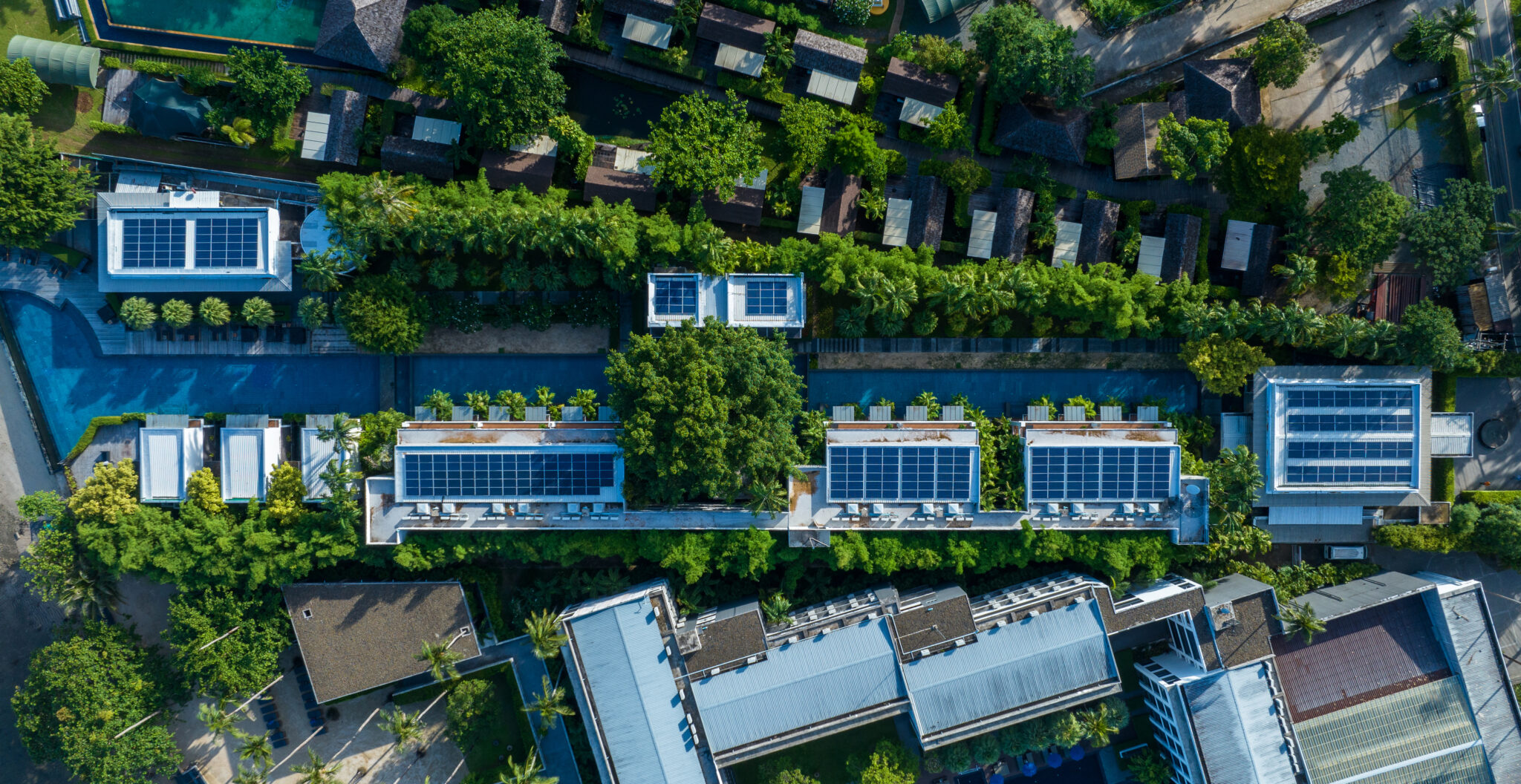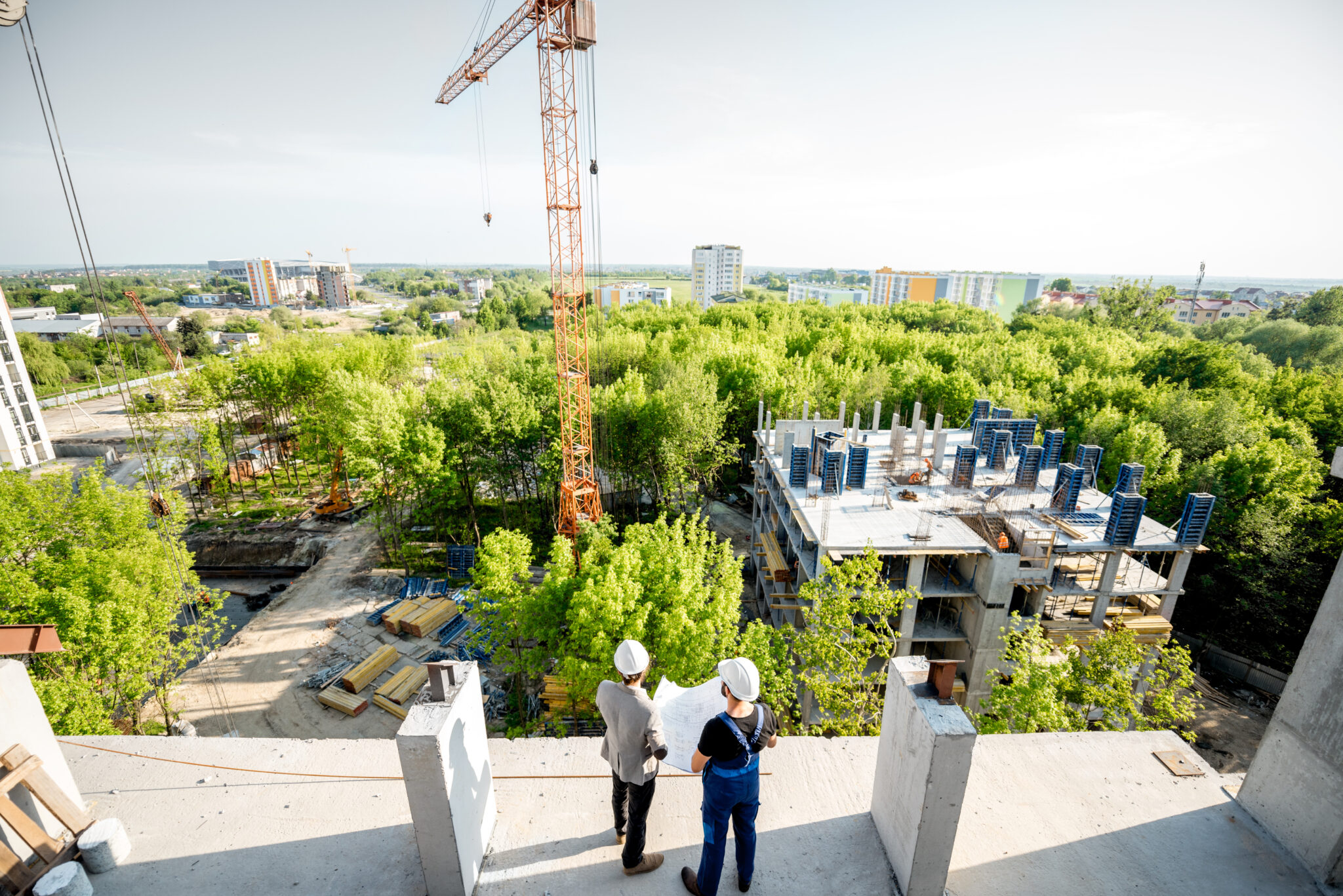Modern construction faces a dual challenge: meeting infrastructure demands while cutting environmental impact. The building sector accounts for nearly 39% of global energy-related CO₂ emissions, with 11% tied to materials and construction processes. Traditional concrete is a major contributor; cement and concrete generate about 9% of total global emissions. At the same time, demolition and construction produce hundreds of thousands of tons of waste each year, much of it concrete that ends up in landfills.
Big Projects Deserve Better Protection
To address this, the industry is increasingly turning to recycled concrete, a sustainable alternative that transforms demolished material into new aggregate. This approach not only diverts waste from landfills but also supports circular-economy goals and reduces the need for virgin raw materials.
In this blog, we’ll break down how recycled concrete is produced, explore its environmental and performance benefits, and look at how it’s reshaping the future of sustainable construction.
Understanding Recycled Concrete
As the construction industry seeks ways to reduce waste and cut carbon emissions, recycled concrete has emerged as a practical, sustainable solution. By transforming demolished structures into usable aggregate, it supports circular construction while maintaining the strength and performance required for modern projects.
What Is Recycled Concrete?
Recycled concrete, often called crushed concrete aggregate (CCA) or recycled concrete aggregate (RCA), is concrete debris from demolished structures that’s processed and reused as aggregate in new construction. The process involves:
- Collecting old concrete from sources such as buildings, roads, or bridges
- Crushing it into smaller pieces
- Removing embedded metals and debris
- Grading it into specific aggregate sizes.
The result is a material that can replace a portion of virgin sand and gravel in new mixes or serve as a sustainable alternative for backfill and road base.
In essence, recycled concrete turns waste into a resource. Instead of sending demolition rubble to landfills, where it occupies valuable space and never decomposes, it’s repurposed as a raw material for new construction. Typically, RCA consists of coarse stone, sand, and remnants of cement paste from the original concrete. Because it comes from hardened material, RCA may retain traces of hydrated cement on the aggregate surface. These characteristics slightly alter its properties compared to virgin aggregates, yet with proper processing, RCA performs almost identically in most applications.
Today, recycled concrete is both a material and a method, a sustainable cycle of use, recovery, and reuse that challenges the old “take-make-dispose” model. It’s now a cornerstone of modern, resource-efficient construction.
Curious about how cement types impact performance and sustainability? Read our Complete Guide to Cement blog here!
How Recycled Concrete Is Made
Turning old concrete into a high-quality aggregate is a carefully managed, multi-step process. Modern equipment and strict quality controls ensure that recycled concrete meets industry standards for cleanliness, strength, and gradation. Here’s how it works:
1. Collection and Sorting
Concrete recycling begins by collecting debris from demolition sites and separating it from other waste. Large chunks are hauled to a recycling facility or crushed on-site. Contaminants like rebar, wood, and asphalt are removed, often using magnets to extract steel for separate recycling.
2. Primary Crushing
The sorted concrete then moves to crushers: jaw, impact, or cone types, that break it into smaller fragments, typically two to three inches in size. Many recyclers use multiple crushers to refine material to a gravel-like consistency. Magnetic separators remove any remaining metal. The goal is to create uniform, well-graded aggregate ready for cleaning.
3. Cleaning and Removal of Contaminants
After crushing, the material is screened and washed to remove fine dust and impurities. Plants like SunAggregates use advanced washing systems such as UltraSCRUB, which employs high-pressure water and scrubbing to strip away old cement paste, soil, and wood particles. This step ensures recycled aggregate is free of deleterious materials that could affect new concrete performance. Quality control lessons, such as Ontario’s Highway 427 failure caused by drywall contamination, have reinforced the importance of thorough cleaning. The final output is a clean, inert material comparable to natural aggregate.
4. Quality Testing and Grading
Before reuse, recycled aggregate undergoes testing for gradation, specific gravity, absorption, and contaminants. Because residual cement paste increases porosity, RCA typically absorbs more water, about 7.5% compared to 3-4% for natural aggregates. Mix designs adjust for this higher absorption. If a batch doesn’t meet specifications, recyclers may blend it with virgin aggregate or assign weaker fractions to non-structural uses.
5. Stockpiling and On-Site Reuse
Once tested, the recycled aggregate is stockpiled for distribution or reused immediately. Portable crushers often operate directly on demolition sites, allowing new construction next door to reuse the material instantly, cutting haulage and emissions. For new concrete, RCA is mixed with fresh cement, water, and sometimes virgin aggregates. Admixtures or water-reducing agents compensate for RCA’s characteristics, producing a strong, consistent mix.
Throughout every stage, quality assurance is critical. The Pennsylvania Aggregates and Concrete Association emphasizes that reputable recyclers provide material “tested for structural integrity” and “free of contaminants,” often tailoring gradation for specific project needs.
In short, the process: collect, crush, clean, test, reuse, turns waste into high-grade aggregate. When executed properly, recycled concrete emerges as a dependable, sustainable material ready for the next generation of construction.
The Rise of Recycled Concrete in North America
What began as a niche sustainability practice is now becoming standard construction policy. Across the United States and Canada, recycled concrete aggregate (RCA) is expanding rapidly, driven by stricter waste regulations, carbon-reduction goals, and public demand for greener infrastructure. Both regions now lead global adoption, alongside Europe.
Government and industry programs actively divert demolition waste from landfills into new projects. Many state Departments of Transportation already specify or prefer RCA for road bases and fills, citing its proven performance and cost efficiency. Leading producers are investing heavily: Vulcan Materials Company, one of America’s largest aggregate suppliers, recycled 1.7 million tons of concrete in 2022 for reuse in new builds.
Demand also stems from cities’ sustainability mandates. Building codes increasingly require Environmental Product Declarations (EPDs) and “Buy Clean” policies to track embodied carbon. Using recycled aggregates can cut CO₂ emissions by roughly 40% compared with conventional mixes, and broader reuse could abate 600 million metric tons of CO₂ by 2050.
Producers are responding with low-carbon concrete lines, such as Lafarge Holcim’s ECOPact, which now incorporates higher recycled content across North America. With the recycled-aggregate market projected to grow from $11 billion (2023) to over $17 billion by 2028, roughly 9% annually, recycled concrete has evolved from a “nice-to-have” to a core strategy for sustainable construction.
Environmental Benefits of Recycled Concrete
One of the most powerful reasons to adopt recycled concrete is its broad range of environmental benefits. By replacing part of the virgin aggregate in new concrete, builders can dramatically shrink a project’s carbon and material footprint. Let’s look at these benefits and see how recycled concrete contributes to more sustainable construction.
| Benefit | Impact on Sustainability |
| Waste Reduction | Recycling concrete diverts large volumes of demolition debris from landfills, keeping valuable materials in use. Each ton of recycled aggregate prevents roughly one ton of waste from being buried, easing pressure on landfill capacity and supporting municipal waste-diversion goals. |
| Resource Conservation | Every cubic yard of recycled concrete used replaces about 2,000 lbs of virgin sand, gravel, or crushed stone, helping preserve natural landscapes and reduce the ecological footprint of quarrying. |
| Lower Carbon Footprint | Producing and hauling virgin aggregates is energy-intensive. Using recycled aggregates can cut embodied CO₂ emissions by up to 40%, thanks to reduced extraction, transport, and processing energy. |
| Circular Economy | Recycled concrete closes the material loop by transforming old structures into new ones. This practice supports design for deconstruction and contributes to long-term sustainability goals across the construction sector. |
In short, recycled concrete diverts waste, conserves natural resources, and cuts carbon, all while supporting a circular, low-impact construction model. It’s not just an environmental choice; it’s a modern business imperative.
Want to see how SmartMix™ helped cut cement by up to 50 kg per batch, and remove the equivalent of 40 cars’ worth of CO₂? Read the Trio Ready-Mix case study to see the results in action!
Why Builders Are Turning to Recycled Concrete
Beyond its environmental value, recycled concrete delivers clear economic and operational advantages for builders, developers, and infrastructure agencies.
Cost Efficiency
RCA typically costs less than virgin aggregate because it requires no new mining and involves shorter transport distances. Natural sand and gravel must be excavated, graded, and hauled from distant quarries, driving up costs tied to fuel and labor. Recycled material, however, can often be sourced from the same project site or a nearby recycling center. Flesherton Concrete notes that RCA helps contractors “cut down on costs” precisely because it avoids mining and long-haul transport. For large-scale jobs, these savings can be significant, freeing funds for other project priorities.
Lower Disposal Costs
Demolition waste is costly to dump, especially in cities where tipping fees are high. Recycling eliminates much of this expense by turning debris into new aggregate. As BCC Research reports, using RCA “saves on disposal and transportation costs,” directly improving profitability. Each load recycled means fewer trucks, less fuel, and fewer landfill charges, converting a liability into an asset.
Reliable Local Supply
RCA is widely available near major construction hubs, where demolition generates a steady material stream. Using local recycled concrete reduces lead times and minimizes exposure to supply disruptions or price volatility in virgin aggregates. LCI Recycling highlights that local sourcing not only cuts delivery costs but also strengthens project scheduling reliability.
Proven Strength and Durability
A persistent myth is that recycled concrete is weaker than new. When processed and tested properly, RCA performs on par with virgin aggregate in strength and durability. It’s been used successfully in highways, runways, and structural concrete with proven reliability. Its rougher texture can even enhance bonding in new mixes, and its lighter weight benefits backfill and subbase work.
Design Versatility
Recycled concrete serves multiple purposes: road and parking bases, foundations, pipe bedding, fill, and even new concrete for curbs and sidewalks. Its porous nature also supports effective drainage systems. Designers increasingly use reclaimed concrete, urban pavers, edging stones, and retaining blocks, blending cost savings with aesthetic appeal.
From a business standpoint, recycled concrete is simply practical economics: lower material and disposal costs, resilient supply, and performance you can trust. Saving money is always a good idea and recycled concrete is one aggregate that delivers exactly that.
Interested in sustainable, high-performance materials? Check out Giatec’s Top 10 High-Impact Building Materials blog to see how builders meet climate goals without compromising strength or durability!
Common Applications of Recycled Concrete
Recycled concrete can substitute for traditional aggregates in a wide range of construction applications, from massive highways to garden walkways. Its strength, stability, and versatility make it a reliable and cost-effective material across projects.
| Application | Key Advantages & Insights |
| Road and Highway Base Layers | Provides strong, stable subbase for roads, parking lots, and runways. Comparable to crushed stone; reduces gravel pit demand and costs. Many state transportation departments now specify RCA for highway bases, including the Ontario Ministry of Transportation. |
| Drainage and Retaining Systems | Porous structure allows water flow; ideal for French drains, stormwater systems, and backfill behind retaining walls. Large concrete chunks can even form gravity walls or serve as the base for permeable pavements, reducing runoff naturally. |
| Backfill and Embankments | Serves as fill for trenches, embankments, and grading; stable when compacted; reduces need for virgin fill, cutting costs and emissions. In large-scale projects like highway expansions, RCA embankments have replaced thousands of tons of new borrow material. |
| New Concrete & Precast Products | Can replace 10–30% of virgin aggregate; used in precast blocks, panels, and pavers; supports circular construction. A milestone example is Holcim’s Recygénie housing project near Paris, which used 100% recycled aggregates and a recycled cement binder to prove that full circular concrete is possible. |
| Landscaping & Architecture | Repurposed as urbanite for walkways, patios, edging, and retaining walls; sustainable and cost-effective. The Shades of Green Permaculture project in Atlanta reused driveway concrete as natural stone pavers, improving permeability and reducing waste. |
From roads to retaining walls and gardens, recycled concrete proves its versatility. Its adaptability and performance are driving wider acceptance across the construction industry. With proper processing and quality control, it’s redefining what’s possible in sustainable building materials.
Big Projects Deserve Better Protection
Performance Considerations and Myths Dispelled
Despite growing acceptance, recycled concrete still faces misconceptions and a few technical considerations. Here’s how the facts stack up against the myths.
| Myth | Facts |
| “Recycled concrete is weaker than new concrete.” | When processed correctly, recycled concrete can match the strength and durability of conventional mixes. Replacing up to 30% of coarse aggregate has minimal effect on compressive strength; higher ratios can perform well with admixtures or fly ash. Proven durable since the 1970s. |
| “Recycled concrete is full of debris.” | Reputable recyclers remove metals and contaminants using magnets, washing, and screening. Certified suppliers provide quality assurance. Failures (e.g., Ontario Highway 427) are due to poor QC, not material flaws. |
| “It isn’t really eco-friendly.” | RCA reduces emissions, conserves raw materials, and limits waste. Energy used for crushing and transport is far less than producing virgin cement/aggregate. Local sourcing further reduces fuel use. Many projects achieve LEED points and carbon savings. |
When sourced and processed properly, recycled concrete is clean, strong, and environmentally beneficial, debunking common myths and proving its reliability for modern construction.
Material Differences and Best Practices
RCA’s higher water absorption means mixes may need extra water or admixtures to maintain workability. It’s slightly lighter and rougher, which can improve bonding but reduce flow in high-performance concretes. Engineers typically limit RCA to 30–35% in structural mixes and use SCMs such as fly ash or slag to maintain durability. Proper curing and air entrainment ensure freeze–thaw resistance even in cold climates.
Optimal Uses
Experts recommend RCA primarily for bases, fills, and non-reinforced concrete, where strength margins are ample. Structural applications require standard testing but are increasingly common as codes evolve.
In short, the myths that recycled concrete is low quality, contaminated, or unreliable are outdated. When sourced from certified suppliers and mixed with care, it performs reliably while delivering measurable sustainability gains. Understanding the facts helps builders make informed, profitable, and sustainable choices.
5 Innovations and Trends Shaping Sustainable Concrete
The drive for sustainability is transforming how the construction industry designs, produces, and reuses concrete. Recycled concrete is central to this shift, supported by breakthrough technologies that make modern concrete stronger, smarter, and dramatically lower in carbon.
1. Higher Recycled Content and Circular Materials
Fully circular concrete uses recycled aggregates, water, and cement. Holcim’s Recygénie project demonstrated a 100% recycled-concrete building. Green concrete lines like ECOPact (Lafarge Holcim, CEMEX, Heidelberg) reduce embodied carbon. RCA-based mixes are increasingly used in major infrastructure projects.
2. Carbon Capture and Low-Carbon Concrete
Low-carbon cement and carbon capture technology are redefining what sustainable concrete can achieve. Producers now replace portions of Portland cement with fly ash, slag, and silica fume, slashing CO₂ emissions per cubic yard. CarbonCure, a Canadian innovator, injects captured CO₂ into wet concrete during mixing, locking it in as mineralized calcium carbonate and strengthening the final product. “Carbon Capture Concrete,” highlighted by Thompson Quarries, literally turns concrete into a carbon sink.
3. Design for Deconstruction and Modular Reuse
“Design for deconstruction” is gaining momentum as a method to maximize the reuse of concrete elements. Buildings are now being designed so that future demolition yields reusable slabs, panels, and other structural elements. Modular precast components can be unbolted and relocated, avoiding waste and reducing the need for new material. Digital materials passports are being piloted in Europe and North America, tracking the recyclability and reuse potential of each building component. This approach shifts construction from a traditional demolish-and-dispose model toward a recover-and-regenerate framework, supporting the circular economy and long-term sustainability goals.
4. Smart and High-Performance Concrete
Advances in smart and high-performance concrete are extending material lifespan and reducing waste. Self-healing concrete, which employs bacteria or microfibers to repair cracks automatically, lowers future repair needs and prevents early demolition. Ultra-High-Performance Concrete (UHPC) offers exceptional durability and strength, making it ideal for long-lasting structures. Additionally, smart concrete embedded with sensors enables real-time monitoring of curing and structural health, as seen in Giatec SmartRock® and other sensor-integrated solutions. These technologies provide data-driven insights that improve quality control and optimize construction processes.
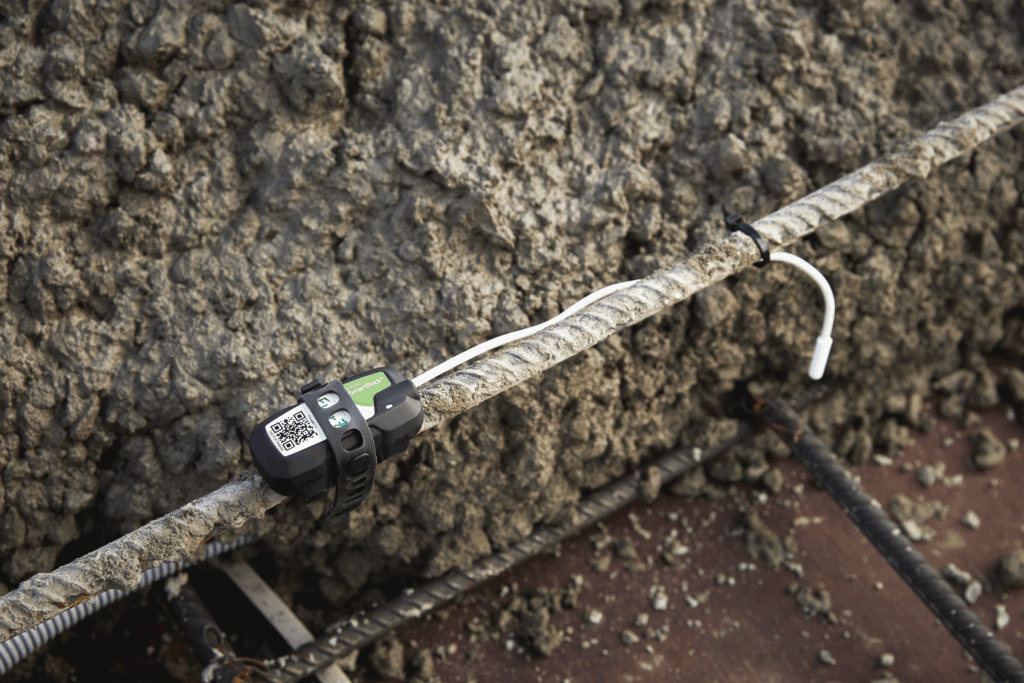
5. Market and Policy Acceleration
Governments are driving faster adoption of recycled and low-carbon concrete through incentives, mandates, and regulatory support. Cities offer tax breaks and expedite permitting for projects incorporating recycled content, while federal and state agencies encourage or require embodied carbon reporting for infrastructure projects. In the U.S., the Federal Highway Administration promotes RCA in highways, and Canadian agencies have long approved its use for roadwork. States such as New York and Colorado have implemented “Buy Clean” policies favoring low-carbon materials, and standards organizations like ASTM and ACI are issuing clear guidelines for recycled aggregate use. These policies help accelerate the transition to more sustainable construction practices.
As Euclid Chemical concludes, “the future of concrete construction is undeniably being shaped by the need for sustainability.” Each new innovation, from carbon capture to design-for-reuse, moves the industry closer to a world where recycled and low-carbon concrete are the default, not the exception.
Conclusion
The evolution of recycled concrete from an experimental idea to a cornerstone of sustainable construction reflects a profound industry shift. Its proven ability to reduce waste, conserve natural resources, and cut carbon emissions aligns perfectly with global climate goals, all while performing on par with traditional concrete in roads, bridges, and buildings. Alongside low-carbon cements, design-for-reuse, and smart technologies, it’s shifting construction toward a reduce-reuse-recycle model, where today’s sidewalks can become tomorrow’s road bases.
Challenges remain, expanding recycling infrastructure, improving demolition practices for material recovery, and continuing education. By embracing recycled concrete, the construction sector is literally building the groundwork for a stronger, more sustainable future.
Want to maximize sustainability on your next build? Check out Giatec’s Guide for Sustainable Construction for practical tips!

